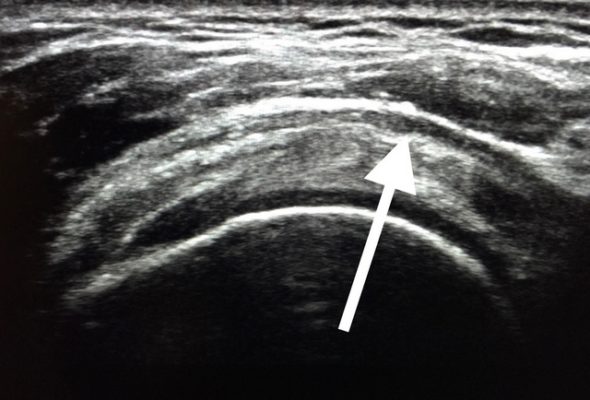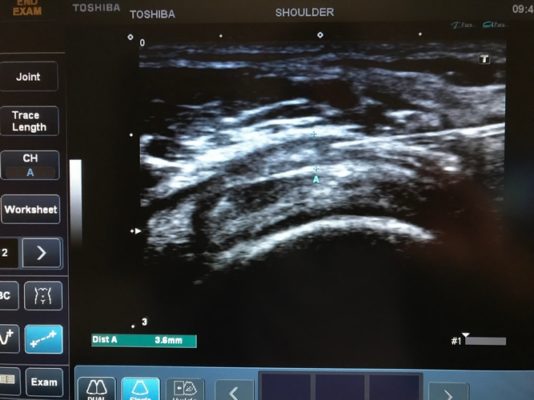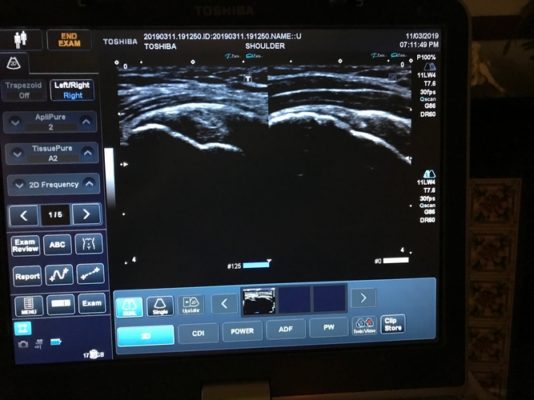Shoulder pain and ‘pain’ in general cannot be seen. What can be seen are changes to the tissues that make up our shoulder joints.
Shoulder Bursitis
Common problems include shoulder bursitis, which is the inflammation of a fluid sac within your shoulder joint. This can be seen on the ultrasound image below (see the darkened band pointed to by the white arrow) . It is a common painful condition that responds very well to ultrasound guided cortisone injections.

 Next picture shows a needle directed into the bursa. Note the measurement ‘A ‘(3.6mm). This is the size of the bursa after injecting with cortisone. To ensure accurate needle placement when the tissues are so small requires ultrasound guidance.
Next picture shows a needle directed into the bursa. Note the measurement ‘A ‘(3.6mm). This is the size of the bursa after injecting with cortisone. To ensure accurate needle placement when the tissues are so small requires ultrasound guidance.
Rotator cuff tendon tear
Another common shoulder problem is a tear within the rotator cuff tendon. The image below shows a comparison between a normal supraspinatus tendon (left image) and a torn supraspinatus tendon (right image). This problem is not for injection, but requires surgical consideration and appropriate rehabilitation.

Acromio-clavicular joint inflammation
A common and often over looked problem is inflammation of the acromioclavicular joint (ACJ). When inflamed the joint responds really well to injection therapy.
 If your shoulder is painful then first establish a diagnosis and then select the right treatment for your problem.
If your shoulder is painful then first establish a diagnosis and then select the right treatment for your problem.